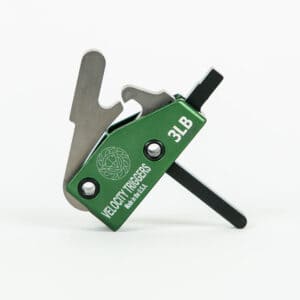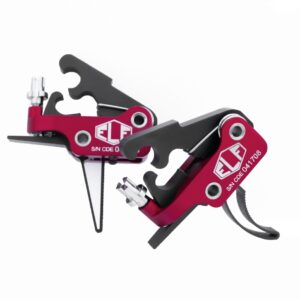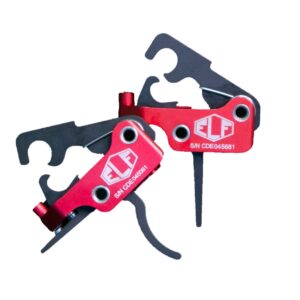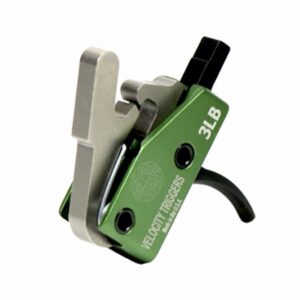Showing all 4 results
Showing all 4 results
Ever upgraded AR-15, but your accuracy still isn’t up to par? Maybe you should try upgrading that old trigger with a brand new AR-15 trigger.
The trigger and trigger guard are some of the most important parts of your AR-15, so it’s probably time to check the best AR triggers on the web and carefully consider your choices.
A good trigger has the power to change the overall feel of your AR-15 rifle. Usually, upgrading a standard trigger to a two-stage one does the trick, especially if it’s for a newly purchased AR rifle.
Why Should You Upgrade Your Stock AR 15 Trigger?
Stock triggers may leave a lot to be desired with their long, stiff pull that can strain your muscles before you even take a shot.
Standard military AR-15s typically come with non-adjustable single-stage triggers, which can pull between 5 to 9 pounds. This might be appropriate for military use, but not so much for precision shooting at long distances.
That’s why replacing an AR trigger with one that’s reliable and lighter could significantly boost your accuracy. A trigger for AR-15 that meets your specific needs is crucial if you aim to hit more than just paper targets, but the best AR trigger can enhance your overall hunting experience.
How an AR-15 Trigger Works
The mechanism comprises several interconnected parts: the trigger itself, which you squeeze to fire the rifle, and a hammer, restrained by the sear until the trigger activates it.
Upon release, the hammer is propelled forward by tension into the firing pin within the bolt.
Then there’s the sear, the point where the hammer and trigger intersect.
The pressure of the cocked hammer rests on the sear, preventing inadvertent firing. The disconnector stops the hammer from falling once a round has discharged, which catches the hammer.
The hook, an extension of the hammer, is what the disconnector latches onto when the weapon cycles. After a round is discharged and the rifle cycles, the trigger resets, the hook releases the disconnector, and the trigger reconnects with the sear, primed to fire again.
Though all triggers share these components, their employment and arrangement can differ. This understanding is essential when considering an AR trigger upgrade, looking for the best AR 15 drop in trigger, or thinking about a replacement.
Types of Triggers
It’s essential to understand the two primary types you’ll encounter: single-stage and dual-stage triggers.
- Single-stage triggers are favored by most hunters for their simplicity and reliability. When you pull a single-stage trigger, it releases the hammer and shoots. While military shooters prefer heavier pulls to avoid accidental discharges, sportsmen and hunters like the lighter pull of the trigger. A good quality AR-15 replacement trigger lets you shoot accurate follow-up shots, and this is good for self-defense applications.
- Dual-stage triggers, as the name suggests, perform the shooting action in two steps. First, you pull the trigger, and it will feel very light. Then you’ll hit a ‘wall’ that you should pull even tighter to fire. This design offers better control, but this isn’t recommended for people with arthritis or weak hands.
Remember that the AR trigger group is important for perfecting your shots. Whether you’re considering a drop in AR-15 trigger or a AR 15 trigger group, knowing the difference between single-stage and dual-stage will help you choose the best drop in AR triggers.
Which Trigger Is the Best Fit for You?
Choosing the right AR-15 trigger will help you better customize your sportsman or hunting equipment. Sometimes it’s better to test different parts, both single- and dual-stage, so you’ll know what you’re dealing with.




